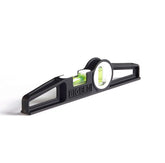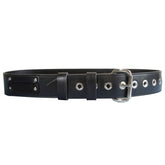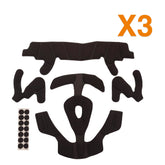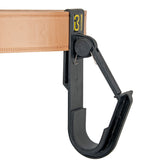The safety harness you wear forms a crucial part of your safe system of work whilst working at height. A safety harness has one primary function and that is that it creates an anchorage point to the body as earrings and belt loops are not strong enough!
In this article, we will cover the importance of the safety harness and standards for weight limits as well as factors that can affect the performance of your safety harness.
Standards for Safety Harnesses
The safety harnesses can then be tested to EN 361 and EN 358 for work positioning and restraint or EN 361, EN 358 for work positioning and restraint, EN 813 for a sit harness. They can also be tested to EN 361 and EN 1497 for a rescue harness from confined space.
EN 361: 2002 states that all safety harnesses need to be independently tested to a weight limit of 100kg. Some manufacturers of Personal Fall Protection Equipment then have the safety harness independently tested to greater weight limits but the safety harness still conforms to EN 361:2002 All this information can be found on the safety harness and on manufacturer's user manual that is supplied with the product.
At the risk of stating the obvious, the weight limit of your safety harness must be suitable for your weight and size. It is also important to ensure the overall imposed weight includes;
- The weight of clothing being worn
- Any equipment being used whilst working at height in the safety harness
At Leach’s we supply a full range of CE approved and tested to EN 361, EN 358, EN 813 and EN 1497 safety harnesses suitable for workers of all sizes. The best advice we can offer is to assess the risks, plan and prepare for your worst-case scenario, remembering the extra clothing worn when working in cold and wet weather and the tools that you may be carrying whilst working at height.
Emergency Evacuation and Rescue Plan
When working in fall arrest, the Working at Height Regulations quite clearly state that there must be provision for a documented rescue plan in place with trained personnel and certificated rescue equipment on site to carry out effectively and ensure that the suspended casualty is quickly and safely recovered within 20 minutes.
It is the responsibility of the user and his or her employer to ensure this aspect of the risk assessment is in place as dependence on the emergency services is not accepted as a rescue plan by the HSE and could result in very serious penalties.
You can never have too much planning when it comes to assessing the risks when working at height. Always make sure that you have a rescue plan in place that you have trained on and practiced when you are using fall arrest equipment. This will ensure that in the event of a fall from height, the casualty will not be suspended in their safety harness for a long period of time.
There is a serious risk of severe injury or even death resulting from suspension trauma. At Leach's we specialize in providing evacuation and rescue equipment and have some unique products that have been designed to require minimal training and are simple to use.
Anchorages EN 795
All fixed anchors / anchor points must be tested to EN 795 The anchor point you are attached to must be able to withstand the following forces;-
6Kn for restraint
-
12Kn for fall arrest
Training and Assessment of Users
It is essential that all users are suitably trained and assessed for competency in the use of their fall protection systems and equipment for the particular intended application. They should also be trained and assessed in the pre-use checking of their Personal Fall Protection Equipment.
Pre-use Equipment Inspections
All users of Fall Protection Equipment must carry out a pre-use inspection before each and every use.
Inspecting Fall Arrest Equipment made from webbing or rope
The British Standard states that components should be examined at least twelve monthly. This is sometimes to be taken ‘annually’, although manufacturers of textile products usually recommend inspection more frequently than this.
Inspection Regime
Employers should establish a regime for the inspection of their fall protection equipment that is drawn up by a competent person. The regime should include;
- The equipment to be inspected (including their unique identification)
- The frequency and type of inspection (pre-use checks, detailed inspections and where appropriate interim inspections)
- Designated competent persons to carry out the inspections
- Action to be taken on finding defective equipment
- Means of recording the inspections
- Training of users
- A means of monitoring the inspection regime to verify inspections are carried out accordingly
At Leach’s we offer a full competent person equipment inspection and re-certification of equipment service as part of our comprehensive customer care. So please contact one of our team on: sales@www.leachs.com or 01432 246 800. We are more than happy to help you with advice.


















